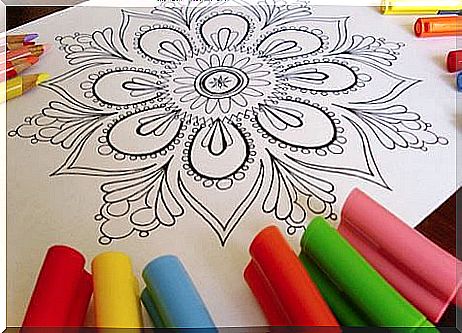Mandalas As An Educational Resource

Mandalas, at a glance, are circular and colorful designs that have different themes. But today they are used as an educational resource by not a few teachers.
To stay up to date with the benefits of mandalas for children, stay with us. If you get to know more about them, you might start including them in the leisure activities you share with your little one.
In order to provide the details of the topic we are dealing with today, we decided to write the article using the question and answer technique.
What are mandalas?
In Buddhist and Hindu religions, mandalas are sketches that symbolically represent both the macrocosm (the universe as a whole) and the microcosm (the inner self conceived as a whole).
According to these religions, mandalas have circular shapes and are circumscribed within a rectangular figure. The circular space is considered sacred and is always located concentrically, that is, in the center of the square or rectangle. In this way, it conveys an idea of perfection.

This drawing uses in its favor the characteristics of the circle having all its points at the same distance from the center. Therefore, it is also suggested that the mandala is in harmony with nature and represents the eternal return of natural cycles.
Why is it important to encourage your child to paint mandalas?
According to the theories of those who have studied them and used them in their teachings, mandalas encourage concentration, creativity and originality in the ideas that the child may later have.
It also favors psychomotor development through the ability to choose and match colors, the posture you adopt, the arm position, the strengthening of muscle control and fine motor skills as a whole.
By trying not to get out of line every time he paints, by choosing the tone he will give from a range of colors and by putting all his effort and concentration into the mandala, the child develops his brain and his cognitive capacity.
Drawing mandalas allows the child to become familiar with symbols and geometry. It also promotes relaxation and is ideal to calm your hyperactivity and rebellion, if you are a child with these characteristics.
Where can I find mandalas for my child to paint?
Of course, on the internet you can find a number of websites that offer mandalas to print and give them to your child in their leisure time.
But if you feel creative, and if you have a talent for drawing, you can create the mandalas yourself that your child will color later. He will definitely feel more comfortable coloring the drawings his mother made for him.

Is there any special technique to draw mandalas
No, the child can draw from side to side, up and down, or however he likes . The only important thing when coloring the mandalas is to let the child express themselves freely, giving free rein to their imagination, with their tastes and aesthetic conceptions.
It is he who should choose and mix the colors that seem to be most appropriate, using colored pencils, crayons or watercolor as he sees fit to translate his tones.
Mandalas as an educational resource
Mom, mandalas can improve your child’s self-esteem. For this purpose, we recommend designating a place in the house to hang them. That way, the whole family and visitors will be able to enjoy them.
Let your child know how happy you are every time he finishes one. This will make you feel proud of your work and your abilities as a creator.
Take the opportunity and share ideas with him. Ask your opinion about which color to use in a particular place. Talk about personal matters, feelings and ideas.
Also, while sharing the fun, cuddle your child: kiss, caress… Take his hand and draw together . The activity of painting mandalas, therefore, promotes discipline and provides an additional pretext to strengthen the relationship between mother and child.









